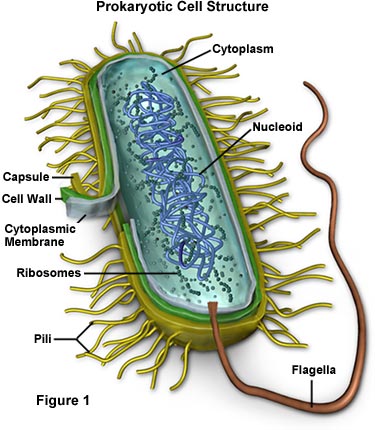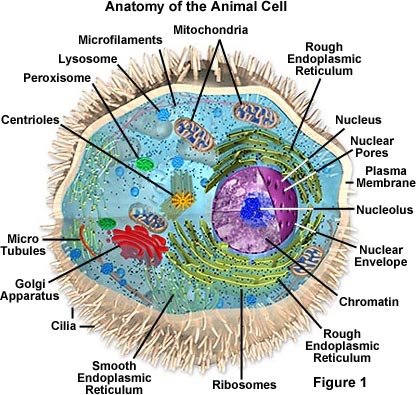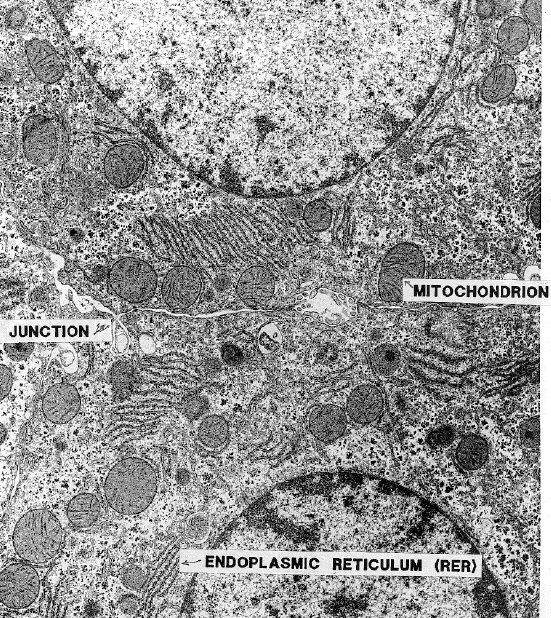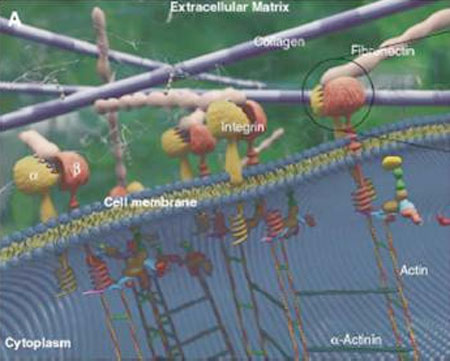|
2.2 Prokaryotic Cells
|
Homework - Follow the syllabus statements: draw and label the cells and write the functions.
Click4Biology
|
|
2.2.1
Draw and label a diagram of the ultrastructure of Escherichia coli (E. coli) as an example of a prokaryote.
|
Escherichia coli (E. coli) is a common bacteria.
 
From http://micro.magnet.fsu.edu/cells/bacteriacell.html and http://www.phschool.com/science/biology_place/biocoach/cells/identify.html
|
|
2.2.2
Annotate the diagram from 2.2.1 with the functions of each named structure.
|
(Annotate means to label and/or add notes.)
Functions of prokaryotic structures
- capsule: polysachharide coat for protection and adhering to surfaces (only some bacteria have it)
- cell wall: protective/structural coat made of peptidoglycan
- plasma membrane: controls movement of substances in and out of the cell
- cytoplasm: dissolves substances, contains enzymes and ribosomes that perform chemical reactions
- ribosome: builds proteins
- nucleoid region: location of the DNA
- bacterial chromosome: name for prokaryotic DNA (no histone proteins)
- pilus (plural: pili): extensions of the cell wall on some bacteria for attaching to surfaces and joining with other bacteria for conjugation
- flagellum (plural: flagella): long structures used for swimming
|
|
2.2.3
Identify structures from 2.2.1 in electron micrographs of E. coli.
|
Label: cell wall, plasma membrane, cytoplasm, ribosomes, nucleoid, pilus.

http://course1.winona.edu/sberg/IMAGES/bact-em.gif
|
|
2.2.4
State that prokaryotic cells divide by binary fission.

http://www.soest.hawaii.edu/oceanography/zij/wp2/outreach/Pro.jpg
Binary Fission Video
|
Binary fission: the process of cell division used by prokaryotes.

http://science.nayland.school.nz/graemeb/yr11%20work/microbes/bacteria.htm
|
|
2.3 Eukaryotic Cells
|
Homework - Follow the syllabus: Draw and label eukaryotic plant and animal cells and write the functions.
Click4biology
|
|
2.3.1
Draw and label a diagram of the ultrastructure of a liver cell as an example of an animal cell.
|
 
From http://micro.magnet.fsu.edu/cells/animals/images/animalcellsfigure1.jpg and http://www.ebi.ac.uk/microarray/biology_intro_files/cell.jpe
|
|
2.3.2
Annotate the diagram from 2.3.1 with the functions of each named structure.
|
See AIS Biology Website (request access from Mr. Sharp)
Inside a Cell Worksheet
Cell Model Project
|
|
2.3.3
Identify structures from 2.3.1 in electron micrographs of liver cells.
|
 

From http://www.ucmp.berkeley.edu/alllife/ratlivercells.gif and http://faculty.une.edu/com/abell/histo/histolab2.htm
|
|
2.3.4
Compare prokaryotic and eukaryotic cells.
|
Prokaryotic Cells: small (1 µm), no nuclei, no organelles, circular DNA without histones
Eukaryotic Cells: large (100 µm), have nuclei, have organelles, linear DNA with histones.
Similarities of both cells: plasma membranes, cytoplasm with ribosomes, DNA, can carry out all the functions of life.
Click4Biology
|
|
2.3.5
State three differences between plant and animal cells.
|
Plant cells have cell walls - animal cells do not.
Plant cels have chloroplasts - animal cells do not.
Plant cells have large central vacuoles - animal cells have many small vacuoles.
Plant cells store carbohydrates as starch - animal store carbohydrates as glycogen.
Plant cells have angular shapes due to the cell walls - animal cells are often rounded and flexible.
Similarities: organelles, membranes, linear DNA, etc.

Plant Cell
From https://dbscience3.wikispaces.com/file/view/plant_cell.jpg/59568312/plant_cell.jpg
|
|
2.3.6
Outline two roles of extracellular components.
|
Examples:
- Bacteria cells: cell wall of peptidoglycan for support, protection, and water balance.
- Plant cells: cell wall of cellulose for support, protection, and water balance.
- Fungi cells: cell wall of chitin for support, protection, and water balance.
- Algae cells: cell wall of cellulose for support, protection, and water balance.
- Animal cells: extracellular matrix of glycoprotein (mix of sugar and protein) for supporting the plasma membrane, attaching to other cells, coordinating actions of cells in tissues, and possibly for movement, migration, and regulating gene expression during differentiation. The extracellular matrix also contains the protein collagen and forms connective tissue between other tissues.

|
|
Microscopy
|
Using Micrometer Eyepieces Part I Part II
Microscope Drawings
Investigation into Animal Cells
Investigation into Plant Cells, Part A
Investigation into Plant Cells, Part B and C
|
Comments (0)
You don't have permission to comment on this page.